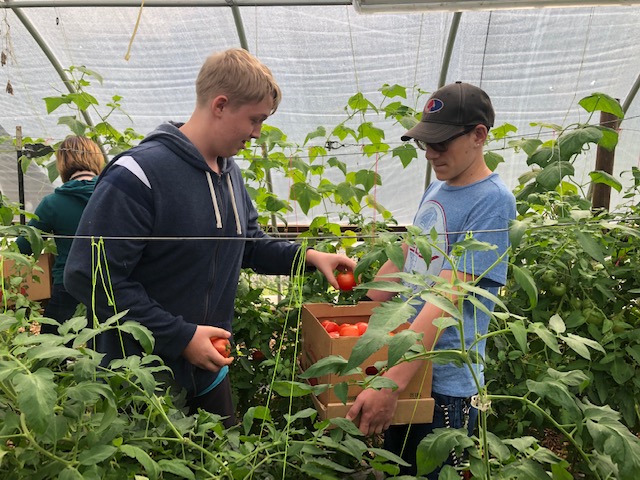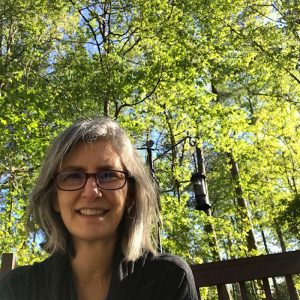
Getting kids to eat vegetables is never easy, but the New River Hill Farm Education Center has a secret recipe.
“You’d be surprised how many kids like the taste of radishes after they’ve grown them from seed,” says Tracy Goodson, district manager of the New River Soil and Water Conservation District, which runs Farm Days in collaboration with Grayson County Public Schools at the center.
At Farm Days, as many as 900 K-12 students a year get the satisfaction of planting and harvesting radishes, squash, tomatoes, cucumbers, peppers, and corn on the 131-acre property, which has been protected by the Virginia Outdoors Foundation since 2003, when owner Otis Philen donated an easement on it.
Opportunities to care for chickens and cows or grow trees with the Virginia Department of Forestry (DOF) are also part of the programs offered at the center.
One DOF activity this year included growing Allegheny chinkapin seedlings in the farm’s greenhouse. The Virginia native tree is in decline, and Goodson says that if the seedlings are successful DOF plans to replant them around the state.
“A day at the farm is more than a field trip,” says Goodson. “It’s hands-on learning where students can apply what they’ve talked about in the classroom. Teachers tell us that some of the kids aren’t engaged at all in the classroom, but when they come to us they get excited about what they are learning.”
Goodson defines the center’s success by the students it serves. “There was one student who didn’t seem interested at all in the beginning,” she says. “But over the course of the class he got more and more enthusiastic. By the end, he was talking to the agriculture teacher about different career opportunities within the agricultural community, like working as an agent at an extension office.”
The center has been able to reach even more students through a 2016 grant from the National Association of Conservation Districts for its “Learn to Grow” project. Thanks to the grant, the center was able to hire interns to help with 23 farm visits, scheduled over 18 months, from two area schools.
“Even though this is a rural area of the state, parts of it qualify as a food desert, so fresh produce is hard to find,” Goodson says. The USDA defines a food desert as a community of at least 500 people that is located more than one mile from the nearest supermarket or large grocery store. “We wanted to show young people how much food you could grow in a small space, so they could start growing their own produce.” Students left with some seed packets and the know-how to start their own gardens.
“For a lot of young people, gardening is a lost art,” Goodson says. “We want to help them rediscover it.”
